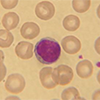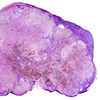Platelet Aggregation Test
Specimen Volume
5 x 3.5 mLSpecimen Transport
Samples must be transported upright in a plastic rack from the clinic to Special Coagulation within 30 minutes of collectionSample Preparation
Turnaround Time
24 hoursSample Processing In Laboratory
Sample should be centrifugedSample Stability
4 hours from venepunctureGeneral Information
A 'normal control' must be collected from a willing, consenting donor as soon as possible after collection of patient samples. All requests for Platelet Aggregation testing must be accompanied by a patient questionnaire (click Here). Please complete all information fully
Samples that meet the following criteria will not be processed:
- Haemolysed, clotted, underfilled or overfilled samples.
- Samples >4 hours old from the time of collection.
- Samples which fail the minimum data set
Assay Limitations:
- Testing may not be appropriate in patients taking medications that can affect platelet function. These medications should be discontinued 7–10 days before testing if clinically appropriate. The pre-analytical questionnaire must be completed for all patients and the information taken into consideration when any aggregation anomalies are seen.
- Care should be taken when separating PRP and PPP; plasma should be carefully removed without disturbing the buffy coat layer or red cells. Red cells and white cells will interfere with the light transmission and cause reduced response amplitude, which can be mistaken for abnormal aggregation.
- Haemolysed samples are not suitable as this leads to activation or desensitisation of platelets. Light transmission will also be reduced due to the increase of released haemoglobin.
- Lipaemia impacts the baseline turbidity of the sample, and traces will be similar to those obtained in samples with low platelet counts. It may be possible to test the samples depending on the degree of lipaemia, but the final report should indicate that the sample was lipaemic.
- Aggregation should be performed within four hours of the blood being taken to reduce the chances of storage artefacts affecting platelet function.
For more information please see https://labtestsonline.org.uk/tests/platelet-function-tests
Notes
Please note that this assay is not currently included in our ISO15189:2022 accreditation scope.
Patients for platelet aggregation should be pre-booked with the coagulation laboratory (ext 15988). The assay is available on a Wednesday and Friday during routine hours (maximum of four patients each day, preferably with samples to arrive in the laboratory no later than 13:00).
Haemophilia Unit - If a patient fails to attend their appointment please inform the laboratory at the earliest opportunity. Please ensure blood samples are delivered to the laboratory within 30 minutes of collection. Testing should be completed within 4 hours of collection; any delays may affect sample integrity which could potentially produce falsely abnormal results.
Specifications
- EQAS Scheme: No








